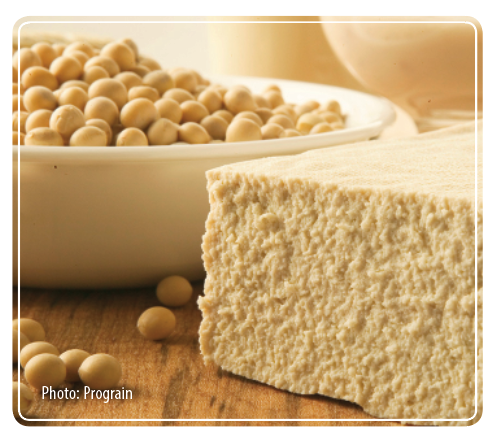Dennis Lange, Industry Development Specialist – Pulses, Manitoba Agriculture and Resource Development
IN 2019, MANITOBA growers planted approximately 13,000 acres of conventional soybeans. These acres are small in comparison to the 1.3 million acres of herbicide-tolerant lines. Conventional soybeans are used for products such as tofu and soymilk and require specific varieties to meet the end-user requirements. Growing conventional soybeans requires more traceability and segregation than herbicide-tolerant lines, and these requirements should be discussed with your buyer to determine what is needed. This article will look at some of the agronomy behind growing conventional beans.
The first step in growing conventional beans is identifying the buyers. In Manitoba, there are four buyers — Prograin, Sevita through Nadeau Seeds, DNS Commodities and Hensall Co-op. Recently, there have been a few interesting premiums for conventional beans, with some reports of levels being offered from $2–$2.50 per bushel above commercial crush beans. Having a conversation with the people who are going to buy your beans will help you identify premiums, choose preferred varieties, and understand what quality factors are required to grow and market these beans. These companies export conventional beans into some of the major markets such as Japan, China, Korea and Malaysia.
So what varieties are available and how do they yield compared to the herbicide-tolerant varieties? A good source of information is Seed Manitoba. Here you can find both information on agronomic performance and market representatives of these lines. Seed Manitoba 2019 shows the check variety OAC Prudence has a long-term yield of 48 bushels/acre averaged across 125 site years. That is close to the check herbicide-tolerant variety, TH 33003R2Y, that has an average of 50 bu/ac averaged across 50 site years. These are test plot results, but it does show how the conventional varieties can yield when a high-quality seed is used and when weed control is well managed. Several new lines coming to market have suitable maturity and improved yield potential. For more information on new lines, check out Seed Manitoba or Manitoba Pulse & Soybean Growers Pulse and Soybean Variety Guide.
Weed control for conventional soybeans is a different management package than herbicide-tolerant systems. First, start with a relatively clean field, avoiding fields that have persistent and challenging weed problems such as wild buckwheat, lambsquarters and kochia (Group 2 resistant). You should start with a pre-plant incorporated and/or pre-seed burn off herbicide. That is a great way to start and will help to control early-season weeds. That should be followed up with early and timely weed control throughout the season. Weed control products can be found in the Manitoba Field Crop Protection Guide and include, but are not limited to, post- emergent products such as Basagran Forte, Odyssey and Viper ADV. Weed control does take more management and expense than the herbicide-tolerant system, but can be done successfully.
One key to help with weed control is plant stand establishment. Choosing a variety and seed lot with good germination and vigour will help to establish a strong plant stand that will help to compete with weeds. Growers should target the range of 140–160,000 plants/acre established. That means, with factoring in germination and overall seed mortality, growers may be targeting a seeding rate of 200,000–210,000 seeds per acre in a solid-seed operation. I would like to see growers shoot for the higher side of that number to ensure the plants can compete with weeds. If you are planting row crop soybeans, I would recommend the same established plant stand, but you may be able to drop your seeding rate based on your planting equipment to 180–190,000 seeds/acre.
Seed contamination is another important consideration to keep in mind. Keep two full growing seasons between herbicide- tolerant varieties and conventional soybeans to avoid the risk of GMO soybean contamination. Volunteer corn is also a contamination risk, so avoid conventional beans on corn ground.
Proper inoculation will help to supply the plant with the needed nitrogen for the growing season. That means using an on-seed inoculant combined with a granular in-furrow inoculant on fields with a short history of soybeans.
Overall soil fertility should be managed through the crop rotation versus management of the phosphate and potassium in the soybean crop. Get your field ready for conventional beans ahead of time. First, identify any nutrient deficiency through soil testing and try to build your nutrient levels ahead of soybeans in the cereal and oilseed years. That is done through higher allowable seed- placed fertilizer rates, banding of fertilizer whenever possible to raise your phosphate levels to the range of 10–20 ppm Olsen and managing other nutrients such as potassium when necessary.
In conclusion, a checklist has been included to help get you started when considering growing conventional soybeans.
Following these suggestions will help you successfully grow conventional beans. The marketing conversations you have with the buyers will help you determine if these beans have a fit on your farm.
Checklist for Growing Conventional Soybeans
- Find a buyer and determine whether the premiums and buyer requirements are suited to your farm operation.
- Select fields with low weed pressure, good fertility and avoid fields where volunteer herbicide-tolerant soybeans and corn could be an issue.
- Choose high-quality seed and use appropriate plant populations.
- Maintain good weed control throughout the growing season
- Before harvest, ensure proper combine and bin cleanout to avoid any contamination from GM soybeans.

